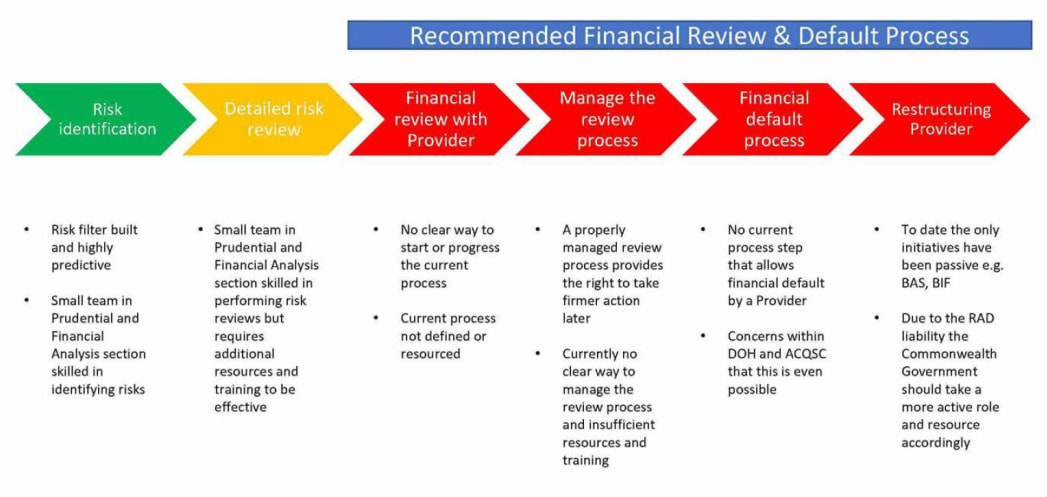Nearly one-third of providers – representing around 37,000 operating places and $5.3 billion in RADs – are experiencing immediate or imminent financial stress based on FY18/19 data, with smaller operators with six homes or less at the most risk of being unprofitable. The 25 February 2020 report by ex-Opal CEO Gary Barnier was submitted to the Royal Commission during the funding and financing hearings.
You can download the report here.
The 21-page report – which was known as the “viability project” and led by Mr Barnier, a member of the Aged Care Financing Authority (ACFA) – looked at 2,301 services and 748 non-Government providers (a greater coverage than the StewartBrown survey) up to 30 June 2019.
19% make a cash loss
They found 141 providers or 19% of the entire sector (holding 11% of operating places and $3.2 billion in RADs) was making a cash loss regardless of whether they are For Profit or Not For Profit.
Another 89 providers (12% of the sector with 9% of operating places and $2.1 billion in RADs) are expected to be in severe financial stress within two years as their cash profit (EBITDA) to revenue is less than 4%.
More metro losers
Metropolitan providers are slightly ahead of their rural and remote counterparts (19% to 17% cash losses) with 20% of the 678 providers with six homes or less recording losses compared to 6% of the 70 with six or more homes.
The report also identified that 67 of the providers in immediate distress require closer scrutiny because of their likelihood of failure.
“It remains our view that approximately 50 providers (one per week) are likely to walk away due to financial stress in 2020,” Mr Barnier concludes. “Not all of these providers will be in rural, regional and remote Australia.”
He also finds that the Government is not set up to identify and work with high-risk providers before they fail – and a “substantial investment” in managing risk is required.
Proactive consolidation required
He makes a number of recommendations, including that the Government:
- Implement and appropriately resource a Financial Review and Default process with the Department of Health and consult
- Set up a Restructuring office within the Department of Health Aged Care Section to coordinate this process; and protect the $30 billion RAD contingent liability held by the Commonwealth and its “broader commercial interests”
- Having identified the 46 extreme risk providers, the Restructuring office should work intensively with these providers to determine a viability strategy
- Provide targeted assistance to providers that deliver a critical community service and block funding for important services in indigenous, frontier or vulnerable communities that are not viable on their own. “Our analysis shows that there are relatively few services in this category,” the report states.
- Offer support to Providers to seek operational improvement or restructuring though the Business Advisory Service, Business Improvement Fund and the Restructuring Support Team
- Build capability within the Government and regulator to monitor and manage financial risks, including investing in staff and IT systems and designing and pursuing a strategy to “progressively transition Government out of a substantial potential RAD loss”.
“This should include creating higher level restructuring opportunities and making policy recommendations,” Mr Barnier adds.
You must ask: if this was the state of affairs in February this year, what is the situation now seven months down the track in an ongoing global pandemic?
One of the key points highlighted by the latest Royal Commission hearings was that the Department of Health has acknowledged its current prudential regulation framework is inadequate.
How much progress has the Department made on Mr Barnier’s recommendations?










